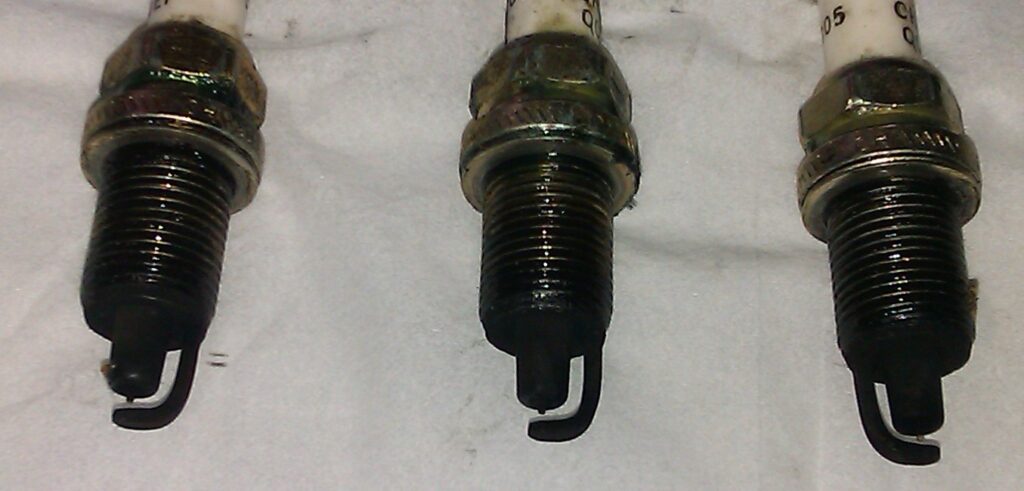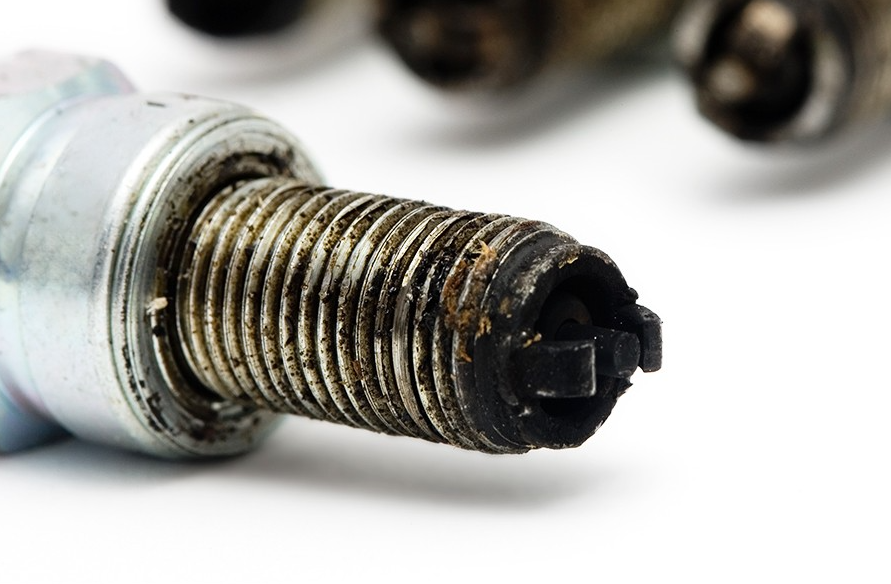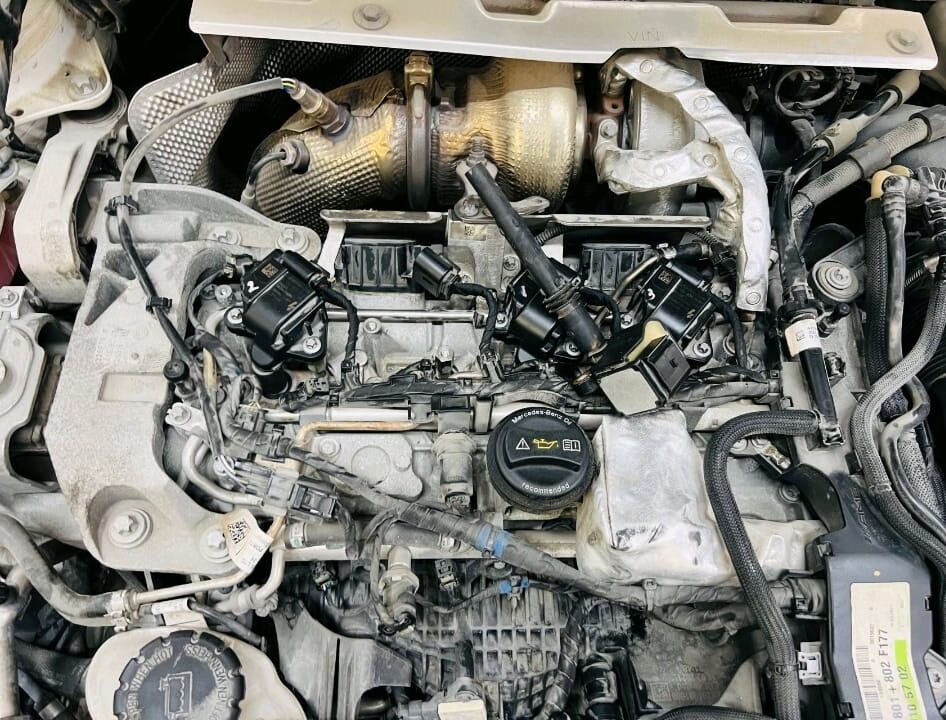Black soot on spark plugs indicates incomplete combustion, often due to a rich fuel mixture or worn spark plugs. It can lead to poor engine performance and should be addressed by cleaning or replacing the plugs and fixing any underlying issues.
Spark plugs are essential for the proper functioning of your engine, playing a key role in igniting the air-fuel mixture that powers your vehicle. However, sometimes these plugs can become coated with black soot, a sign that something is wrong under the hood. While it might seem like a small issue, black soot on spark plugs can point to serious engine problems, such as poor combustion, fuel inefficiency, and increased emissions.
In this comprehensive guide, we will break down the causes of black soot on spark plugs, explain how it affects engine performance, and provide detailed steps on how to fix the issue.

Contents
What Is Black Soot on Spark Plugs?
Black soot on spark plugs, also known as carbon fouling, appears as a dark, powdery or sticky residue on the spark plug electrodes and insulator tips. The soot is typically a sign of incomplete combustion in the engine, where carbon from the fuel doesn’t burn completely and forms deposits on the plugs.
While it’s common for spark plugs to wear over time, excess black soot can have serious consequences for your vehicle’s performance. This condition usually results from a combination of factors such as improper fuel-air mixture, malfunctioning engine components, or poor driving habits. It is important to diagnose and resolve the problem early, as prolonged soot buildup can damage the engine and lead to costly repairs.
Common Causes of Black Soot on Spark Plugs
Several factors can contribute to the formation of black soot on spark plugs. Let’s explore the most common causes in detail.
1. Rich Air-Fuel Mixture
An overly rich air-fuel mixture means there is too much fuel and not enough air in the combustion chamber. This imbalance prevents the fuel from burning fully, leading to carbon buildup on the spark plugs. A rich mixture can result from the following issues:
- Faulty Fuel Injectors: If the injectors are malfunctioning or clogged, they can deliver too much fuel into the engine.
- Clogged Air Filters: When the air filters are dirty or clogged, the engine can’t get enough air, causing the fuel to burn inefficiently.
- Malfunctioning Sensors: The oxygen sensor and mass airflow sensor regulate the amount of air and fuel entering the engine. If these sensors are faulty, they can send incorrect signals to the engine control unit (ECU), leading to a rich fuel mixture.
These issues disrupt the combustion process and result in carbon soot on the spark plugs. It’s important to check and replace any malfunctioning components to prevent further damage.
2. Worn or Faulty Spark Plugs
As spark plugs age, they can wear down and become less efficient in creating a spark. A weak spark results in incomplete combustion, which leaves carbon deposits on the plug. This can occur when the spark plug’s electrode is eroded, or when the heat range is too cold for the type of driving you do.
- Worn Electrodes: Over time, the electrodes can wear down, leading to a weak spark or misfire.
- Incorrect Heat Range: Spark plugs are designed to operate at a specific temperature. If the spark plug’s heat range is too cold, it can lead to incomplete combustion and soot buildup.
Regularly checking your spark plugs and replacing them when necessary can help prevent carbon fouling.
3. Oil Leaks into the Combustion Chamber
Oil entering the combustion chamber can also lead to black soot on spark plugs. When oil mixes with the air-fuel mixture, it burns along with the fuel, leaving behind black, oily deposits on the spark plugs. This can happen due to:
- Worn Piston Rings: Piston rings create a seal between the combustion chamber and the oil system. If the rings are worn, oil can leak into the combustion chamber.
- Damaged Valve Seals: Valve seals prevent oil from leaking into the engine’s combustion chamber. If the seals are damaged, oil can enter and cause carbon buildup on the spark plugs.
- Blown Head Gaskets: A blown head gasket can allow oil and coolant to leak into the combustion chamber, resulting in soot buildup.
In addition to soot on the spark plugs, you might notice blue smoke from the exhaust, indicating oil burning in the engine.
4. Short Trips and Frequent Idling
If you primarily drive short distances or idle your car frequently, the engine may not reach its optimal operating temperature. This leads to incomplete combustion, as the engine doesn’t have enough time to burn the fuel properly. Over time, this will lead to the accumulation of black soot on the spark plugs.
Engines need to reach a certain temperature for the fuel to burn efficiently. Short trips or excessive idling can prevent this, leading to poor performance and soot buildup.
5. Low-Quality Fuel
Fuel quality plays a critical role in engine performance. Low-quality or impure fuel can cause incomplete combustion, resulting in the formation of black soot on the spark plugs. Fuel with a low octane rating, or fuel that contains contaminants, can lead to carbon buildup in the combustion chamber.
To avoid this issue, always choose high-quality fuel from reputable sources and avoid using fuel that is more than a few months old.
Symptoms of Black Soot on Spark Plugs
Black soot on spark plugs doesn’t always show immediate signs, but if left unaddressed, it can lead to performance issues. Here are some common symptoms that you may experience:
- Rough Idling: If the engine is not firing correctly due to soot buildup, the car may shake or idle roughly.
- Decreased Acceleration: When spark plugs are fouled, the engine may struggle to accelerate smoothly, leading to sluggish performance.
- Increased Fuel Consumption: A rich air-fuel mixture can cause the engine to burn more fuel, reducing fuel efficiency.
- Difficulty Starting the Engine: A spark plug with heavy soot buildup may fail to ignite the fuel mixture, making it difficult to start the engine.
- Black Smoke from Exhaust: Excessive soot buildup can lead to black smoke coming from the exhaust pipe as unburnt fuel exits the engine.
If you notice any of these symptoms, it’s important to check your spark plugs and address the issue promptly.
How to Fix Black Soot on Spark Plugs
If you’ve noticed black soot on your spark plugs, it’s important to address the underlying causes to prevent further engine damage. In this section, we’ll walk you through the steps to clean the spark plugs, diagnose the root cause of the issue, and offer solutions to get your engine running smoothly again.
Step 1: Inspect and Clean the Spark Plugs
Start by removing the spark plugs using a spark plug socket and ratchet. Inspect the plugs for signs of wear or fouling. You can clean minor soot buildup by using a wire brush or a specialized spark plug cleaner. Make sure the spark plug gap is correct before reinstalling the plugs.
- Cleaning Tools: You’ll need a wire brush, carburetor cleaner, or a spark plug cleaning tool.
- Check the Gap: Use a feeler gauge to check the spark plug gap and adjust it according to your vehicle’s specifications.
Step 2: Diagnose the Root Cause
Cleaning the spark plugs alone won’t prevent the problem from coming back. It’s essential to identify and fix the underlying issue that caused the soot buildup in the first place. If the problem is related to a rich fuel mixture, malfunctioning sensors, or oil leaks, these issues should be addressed by a professional mechanic.
- Rich Fuel Mixture: Inspect fuel injectors and air filters. Replace or clean them as needed.
- Oil Leaks: Check piston rings, valve seals, and head gaskets for wear and tear. Replace any damaged components.
- Ignition Issues: Replace worn-out spark plugs and ensure the ignition system is working correctly.
Step 3: Replace Worn Components
If cleaning the spark plugs doesn’t resolve the issue, or if they’re heavily worn, it’s time to replace them. Make sure to choose spark plugs that match your vehicle’s specifications.
Preventing Black Soot on Spark Plugs
While black soot on spark plugs is often a sign of underlying issues, there are several preventative measures you can take to avoid this problem in the future:
- Regular Maintenance: Follow your vehicle’s maintenance schedule to ensure that all components are functioning correctly.
- Use Quality Fuel: Always use high-quality fuel from reputable sources.
- Drive Efficiently: Try to avoid excessive idling and short trips, as these prevent the engine from reaching optimal temperatures.
- Replace Worn Parts: Replace spark plugs and other components when they show signs of wear or damage.
- Timely Repairs: Address any engine issues promptly to prevent further complications.
Frequently Asked Questions
Here are some FAQs about the black soot on spark plugs –
Q1: Can I drive with black soot on my spark plugs?
It’s not advisable to continue driving with black soot on your spark plugs. While the vehicle might still run, it can lead to engine misfires, decreased performance, and even long-term damage. If left unchecked, the problem can worsen and require more expensive repairs.
Q2: How often should I check my spark plugs?
It’s recommended to inspect your spark plugs every 20,000 to 30,000 miles or according to your vehicle’s maintenance schedule. Regular inspections can help identify problems early and prevent performance issues.
Q3: Can black soot on spark plugs cause engine damage?
Yes, if left unaddressed, black soot on spark plugs can lead to engine misfires, poor performance, and even long-term engine damage due to incomplete combustion. It’s essential to diagnose and resolve the underlying cause promptly.
Q4: Are there any specific tools needed to clean spark plugs?
Basic tools you’ll need include a spark plug socket, a ratchet, a wire brush, and a spark plug gap tool. These tools will help you clean and inspect the spark plugs effectively.
Q5: Should I replace all spark plugs if one is fouled?
It’s generally recommended to replace all spark plugs when one is fouled, especially if the vehicle has high mileage. Replacing them ensures uniform performance across all cylinders.
Conclusion
Black soot on spark plugs is a clear sign of engine inefficiency and should not be ignored. Whether it’s due to a rich fuel mixture, faulty spark plugs, oil leaks, or other issues, addressing the problem early can prevent further engine damage and restore your vehicle’s performance.
Regular maintenance, timely repairs, and using quality fuel can help prevent this issue from recurring. By knowing the causes and symptoms of black soot on spark plugs, you can ensure a smoother, more efficient driving experience for years to come.





